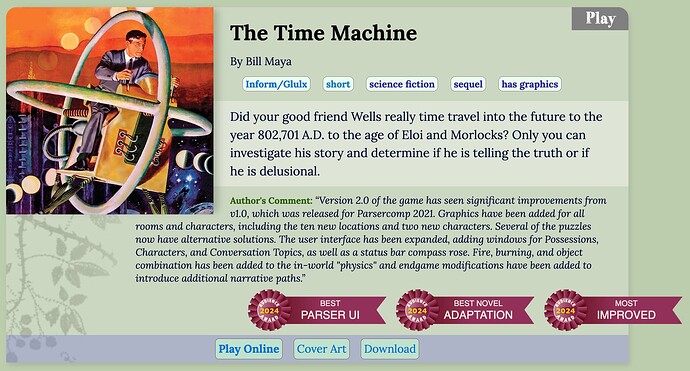FWIW, here’s a bit on my experience of converting my short story “Photograph” to full-parser interactive fiction in I6 over 20 years ago.
“Photograph”, the short story, was a reflective and introspective piece of writing centred on the life and thoughts of a middle-aged loner. An early decision I made for the conversion (and not a great one) was that I’d try to keep the original narrative structure intact and, as much as possible, retain the original text. To mix it up a bit I built in some of the exposition via interactive flashbacks that could be entered in any order and multiple times, and which allowed for some (reversible) deviations in the backstory. But for all that, it remained largely faithful to the original story and quite linear.
Even though it was linear and based closely on something I’d already written, I found I could only use my original text as the “bones” of the new work and spent most of my time on the conversion “fleshing” it out to provide for the required level of player interaction and immersion. In this bulking-up process I tried to somehow maintain the narrative flow, with the reader/player covering everything they needed to see in an appropriate order for the story to work; without getting stuck, feeling the thing was on rails, being subjected to text dumps, or losing agency.
In addition to the “fleshing” out of the story, I made use of the usual “gated”-section IF approach to the narrative and relied heavily on prompts (some subtle(ish), some not-so-much) to keep things moving from one section to the next. And, for anachronistic reasons, I included exactly one traditional puzzle. I thought at that time (2002) that any IF “game” should have puzzle elements. Sam Kabo Ashwell gave this decision (the puzzle involved a tree) more credit than it was due in his generous review of my game several years ago: ANCIENT MYSTERIES OF IF COMP: Photograph | These Heterogenous Tasks
Was the IF conversion process easy? No. Did it work? Only partially. Would I do it this way again? No.
If I was converting a work of traditional fiction to IF now with the benefit of more than 20 years of hindsight, I’d be picking something that lent itself more to an interactive medium in the first place. I’d be viewing the conversion as a new work, drawing on the original, but for its own ends. I’d be deciding what from the original I was prepared to give up, and what I was not. I’d envisage how to draw the most out of the story and its world from the introduction of interactive elements, and how to use those elements to keep the reader/player engaged and manage the pacing (whether it be via use of puzzles or other methods). I’d also be looking at the style of interaction that I wanted (puzzle-based, puzzle-lite narrative-based, puzzleless, or whatever), the tone of the narration to best serve the objectives of the story as IF, and the potential to play to some of IF’s strengths, such as use of multiple POVs, paths and/or endings.
Lastly, in my case I’d be giving some thought to whether what I wanted to achieve would be best served by a full-parser system, or going with a limited-parser, or some of the many sophisticated choice-based systems available these days.
Steve

